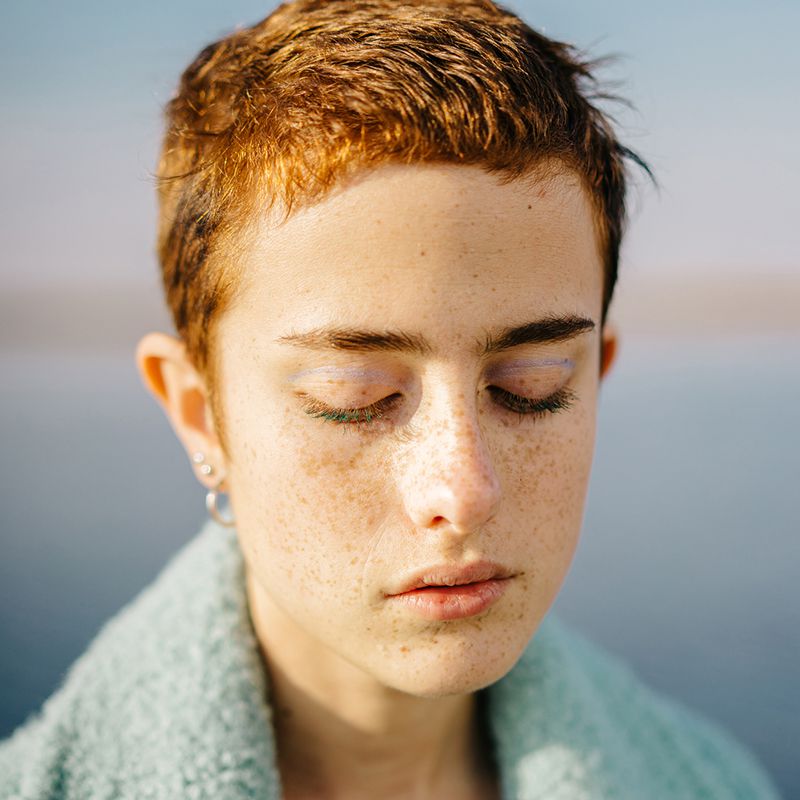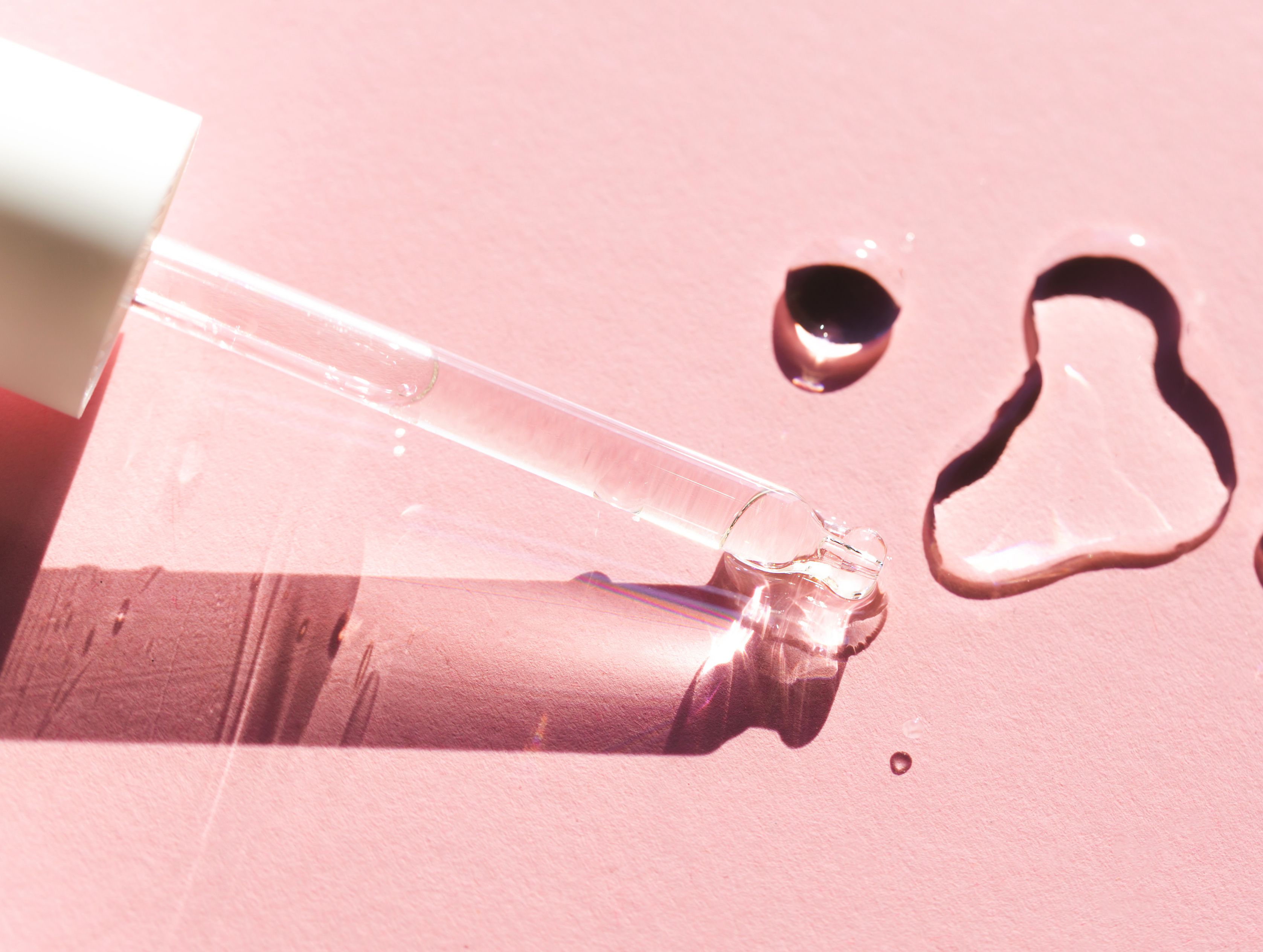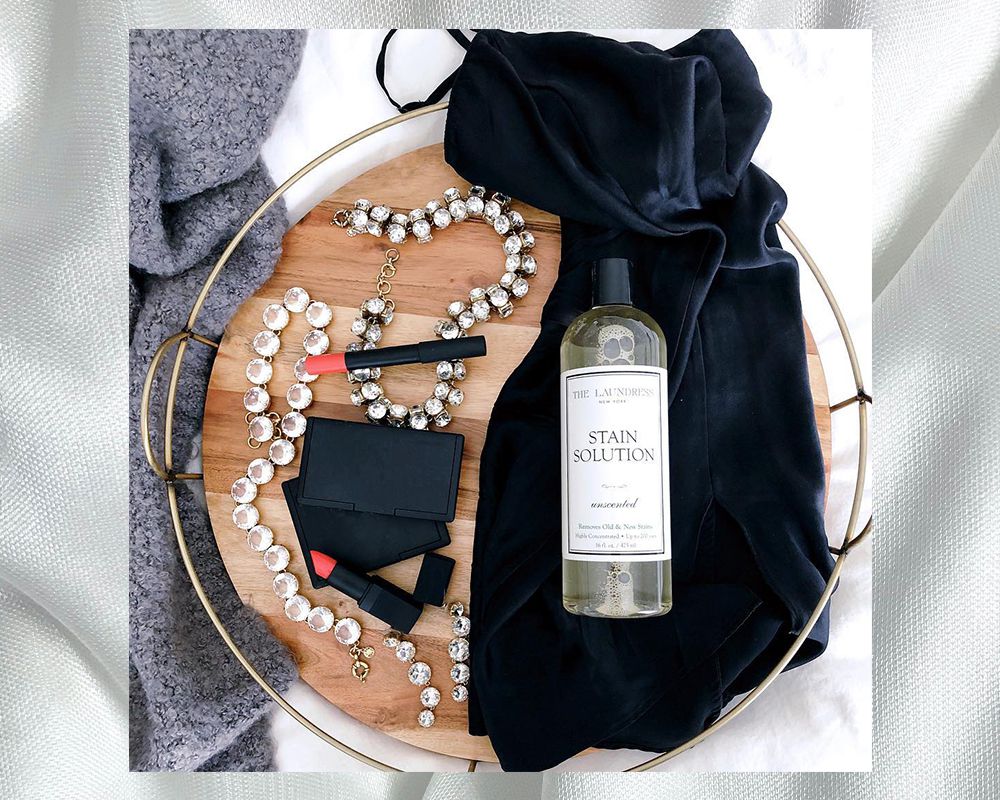How to Prepare to Freeze Your Eggs, According to Fertility Experts

On Christmas Eve (2020, obviously), my egg-freezing doctor called with bad news. “Your AMH levels are low,” she said. “Any lower, and we might not recommend you proceed with egg freezing at all. We can move forward, but you should check your expectations for how many eggs we’ll get.”
AMH (anti-mullerian hormone) is one marker of fertility. AMH and FSH (follicular stimulating hormone) indicate how well your ovaries are producing eggs. The more eggs you can produce, the higher your chances of retrieving many eggs from an egg-freezing cycle.
“What can I do?” I asked her.
“Evidence is inconclusive,” she said. “Happy holidays.”
I sat stunned for a few minutes and then swung into distinctly un-festive action. Dozens of friends and friends-of-friends have frozen their eggs, so I reached out to them to panic-ask for advice.
What I learned surprised me. Most of them had low AMH—also known as a diminished ovarian reserve— and used holistic interventions to raise their levels. Where my doctor’s best advice was to do multiple $12,000 retrievals—pushing what’s already a luxury “elective” medical procedure not covered by most insurers into the realm of stratospheric unaffordability—I would spend the next three months diving deep into interventions to boost AMH, maximize fertility, and ultimately retrieve double the eggs my doctor suggested we could hope for.
I benefitted from a whisper network of women who gave me invaluable advice, but it dismayed me to see how little public information exists for women in my situation. It did not, however, shock me. Western medicine is famously dismissive of female reproductive health. There are far fewer resources devoted to female reproductive health than for men. Researchers often fail to analyze trial data by sex. And serious reproductive conditions like endometriosis take an average of eight years to be diagnosed. We are not yet living in an illuminated age of female fertility, with a medical establishment that takes its complications seriously.
But individual women do, and so do many individual providers of both western and alternative medicine. I’ve compiled what I learned from them, hoping it might be helpful to any woman looking to boost her AMH or who has been told for any other reason (like chemotherapy or age) that her shot at a successful cycle may be low. These practical steps are also useful for anyone looking to maximize their egg freezing cycles and fertility, whatever their numbers.
Meet the Expert
- Jaclyn Tolentino is a New York City-based fertility expert at Parsley Health.
- Jill Blakeway is an acupuncturist, clinical herbalist, and director of the Yinova Center.
- Aimee Raupp is the author of Yes, You Can Get Pregnant, and an acupuncturist and fertility guru.
Optimism
The single most important decision I made was to approach these fertility interventions with an optimistic outlook. I knew the process could quickly veer, feeling like a slog or something to be bitter over. But I want my future children to live in a world of optimism rather than one of defeatism and resolved to channel this future mother-self throughout.
Fertility experts say this paradigm shift is key. “It’s essential to keep a hopeful mindset,” Jaclyn Tolentino of New York City’s Parsley Health told me. “I like to recommend exercises such as visualizing a successful outcome, as well as journaling emotions and intentions. There’s so much we can’t control about this process, but we can try to focus on how we feel while supporting and honoring those feelings in a way that is both optimistic and authentic.”
Jill Blakeway, an acupuncturist, clinical herbalist, and director of the Yinova Center, concurs. Blakeway says many of her patients suffer from guilt or regret if their numbers are low. “But sometimes there is no reason,” she says. “Sometimes it just is. Guilt and regret only add to the suffering.” And stressing out over your numbers is counterproductive, as multiple studies have found stress correlates with diminished ovarian reserve. So, whatever your numbers, accept that you are where you are and look forward.
Stressing out over your numbers is counterproductive, as multiple studies have found stress correlates with diminished ovarian reserve.
A Fertility Diet
Because I already ate plant-based and organic—with a dash of cheeseburger and martini, for balance—I assumed nothing much about my diet would need to change. This was incorrect. It turns out eating for fertility isn’t just about eating clean. It’s about eating specific foods prepared in specific ways.
In her book, Yes, You Can Get Pregnant, acupuncturist and fertility guru Aimee Raupp point to nutrition research from Harvard and the American College of Obstetricians and Gynecologists. Their studies found that protein-rich, low-carb diets with full-fat dairy products and minimal trans fats and simple sugars improve fertility. Raupp’s three essential food groups for fertility are animal proteins (pasture-fed eggs, grass-fed meat, wild-caught fish, full-fat dairy, pasture-fed butter, and liver); healthy fats (olive oil, coconut oil, almonds, walnuts); and cooked vegetables and low-sugar fruit (berries, avocado, cooked leafy greens, sweet potatoes, and root and cruciferous vegetables).
She also recommends bone broth, and Brodo’s excellent bone broths became something of a 3 PM ritual for me instead of coffee. (No, it doesn’t have the same effect.) Perhaps my favorite of Raupp’s suggestions was to eat caviar, which I procured from the fertility/wallet/Instagram-friendly Pearl Street Caviar and spread liberally over everything from omelets to blinis.
And although nothing goes with caviar quite like champagne, I largely abstained from alcohol. Evidence is conclusive that heavy drinking diminishes ovarian reserve. While the jury is still out on moderate drinking, studies have found that light drinkers seek fertility treatments less than moderate drinkers. In any case, I swapped out negronis for the many excellent non-alcoholic alternatives on the market and am pleased to report on a few I’ll keep in rotation. Kin Euphorics beverages are made with adaptogens, nootropics, and botanics—all great for your body, mind, and soul. Their sparkling spritz tastes like spring and optimism in a can and distinctly and incredibly like a cocktail. Seedlip’s Garden varietal makes an excellent pseudo-martini that became something of a ritual for me after every night of injections during my cycle.
Supplements
I took three supplements every day for three months: CoQ10, DHEA, and Fertility Smart. CoQ10 has been found to improve ovarian reserve and increase AMH-positive follicle count. DHEA increases antral follicle count, which in turn causes AMH to rise. Fertility Smart was recommended to me by numerous friends with similar low AMH woes who successfully egg-freezing cycles. It includes many ingredients shown to improve fertility, including magnesium, B vitamins, iron, and vitamin D.
Both Blakeway and Raupp stress the importance of Vitamin D in particular, as deficiency has been linked to fertility issues, including low AMH, along with polycystic ovary syndrome and endometriosis. Collagen has also anecdotally been found to boost fertility, and it was easy enough to scoop some Vital Proteins Collagen Peptides into my daily not-coffee. All of the supplements came with the caveat you should take them for three months. “An egg takes 85 days to develop,” Blakeway confirmed. “Your health during that time affects the egg and its potential.”
An egg takes 85 days to develop. Your health during that time affects the egg and its potential.
Movement
A six-day-a-week workout routine is typically responsible for a significant portion of my zen. So I was dismayed to learn that level of exercise isn’t conducive to optimizing fertility. Researchers in Norway found a direct link between fertility problems and heavy exercise. In contrast, numerous others have found that moderate, low-impact movement for no more than five hours per week leads to the best fertility outcomes. “In some individuals, overexercising can lead to disruption in hormone function due to an impaired HPG axis,” Tolentino says. “The HPG axis is a major signaling pathway that controls the production of our sex hormones in premenopausal women.”
Exercise is still recommended. However, while you prep for your cycle, keep it to under five hours a week, and don’t pick workouts that push you to the point of collapse. Opt for Pilates, yoga, and hiking rather than barre, running, or HIIT.
Acupuncture
Every woman I spoke with who had embarked on a fertility crusade before egg freezing or IVF said she believed acupuncture helped her most. Many acupuncturists recommend weekly treatments, but I went biweekly. My guiding acupuncture lights were Raupp, who runs her eponymous practice in Manhattan’s Flatiron District, and the Yinova Center’s expert practitioners.
“Here in the West, doctors have begun to recognize acupuncture as a safe and effective fertility treatment,” Blakeway says. “This is thanks to an increase in research that shows that acupuncture improves IVF outcomes and can help women who have poor ovarian reserve to conceive.”
Why does acupuncture help? “One proposed mechanism is increased circulation and blood flow to the uterus and ovaries,” Tolentino says. “Another possibility is acupuncture’s benefit in terms of stress and reduction.” In the three months, I saw them, Raupp and the Yinova Center used acupuncture not only to work on fertility points but to treat insomnia and headaches near-instantly, offering real-time proof positive their needles were working.
Arvigo Massage
Liza Roeckl, an EMDR therapist, Reiki Master, and energy healer who counts Lena Dunham among her clients, recommends Arvigo massage (also known as Mayan abdominal massage) for clients looking to optimize their fertility. When Roeckl worked her magic on my abdomen out of her Soho studio one rainy March morning, she found that my uterus had moved slightly forward of its optimal placement and gently, painlessly massaged it ever-so-slightly back into place. She showed me how to massage myself at home—clockwise around the belly button—not just to keep everything in its proper place but also to support blood circulation to the reproductive organs.
“By repositioning the reproductive organs through gentle massage, blood flow and energy is increased to all organs,” Roeckl tells me. “These vital fluids and energy nourish and repair the organs naturally—including the ovaries—making the quality of the eggs healthier.”
By repositioning the reproductive organs through gentle massage, blood flow and energy are increased to all organs.
Endocrine Disruptors
As Nicholas Kristof reported recently in the New York Times, endocrine disruptors—found in plastics, makeup, ATM receipts, pesticides, food, detergent, toys; in short, found everywhere—hurt egg quality, along with sperm count.
But racing to replace every endocrine disruptor you interact with sounds like a recipe for the exact sort of stress expectant egg moms are instructed to avoid. So I decided to reduce toxic exposure rather than eliminate it by making a few high-impact swaps.
And as it turns out, shopping in pursuit of reproductive health can spark a fair bit of joy. My (other) quarantine project—finding my culinary groove—necessitated a switch away from toxic cookware, which is most commonly found in ubiquitous non-stick options. Clean swaps are plentiful, but perhaps none are as aesthetically pleasing as Caraway, whose ceramic-coated dove grey set now plays host to my ragus, roasted veggies, and caviar omelets. It is also dishwasher-safe and a breeze to clean.
Next up came my beloved candles, which it turns out were tragically burning carcinogenic soot (from paraffin, a petroleum byproduct) into my apartment. Bee Shapiro—a chic Williamsburg mom and reporter for the New York Times—thankfully created a line of non-toxic candles to address this issue. The resultant company, Ellis Brooklyn, now includes perfumes, bath products, and candles, which come in heavy, moss-green jars and smell like that international vacation you’ve longed to take.
Further luxurious clean-ups came courtesy of Glacce, whose crystal water bottle replaced my plastic bottles. I turned to TenOverTen’s non-toxic nail polish and Kate McLeod’s body stones, which are sans synthetics or preservatives traditionally found in lotions when it came to beauty and wellness swaps.
Final Thoughts
These swaps were downright pleasurable, which reminded me of some of the most helpful advice Roeckl gave me—to think of maximizing fertility as enhancing your own quality of life rather than adjusting everything around a projected future outcome. Making these three months positive has sustainably changed my lifestyle even though my cycle is over. I drink less, stretch more, and understand the power of an acupuncture needle to work its magic on everything from fertility to sleep to stress. This means that I’ll have already been living a conducive lifestyle when I look to conceive naturally. “A baby is the icing on the cake,” Roeckl said. “When you start seeing it like that, the real magic occurs.”
Think of maximizing fertility as enhancing your own quality of life rather than adjusting everything around a projected future outcome
And magic did occur: my retrieval resulted in double the number of eggs my doctor predicted. Studies back up the magic: three months of Whole Systems Traditional Chinese Medicine— acupuncture, massage, supplements, diet—result in much better outcomes for IVF patients than those who do nothing or acupuncture alone. So don’t let a discouraging early prognosis keep you from freezing your eggs. My Christmas Eve self almost did and is now very glad she didn’t.
Considering Freezing Your Eggs? Here's What to Know First









